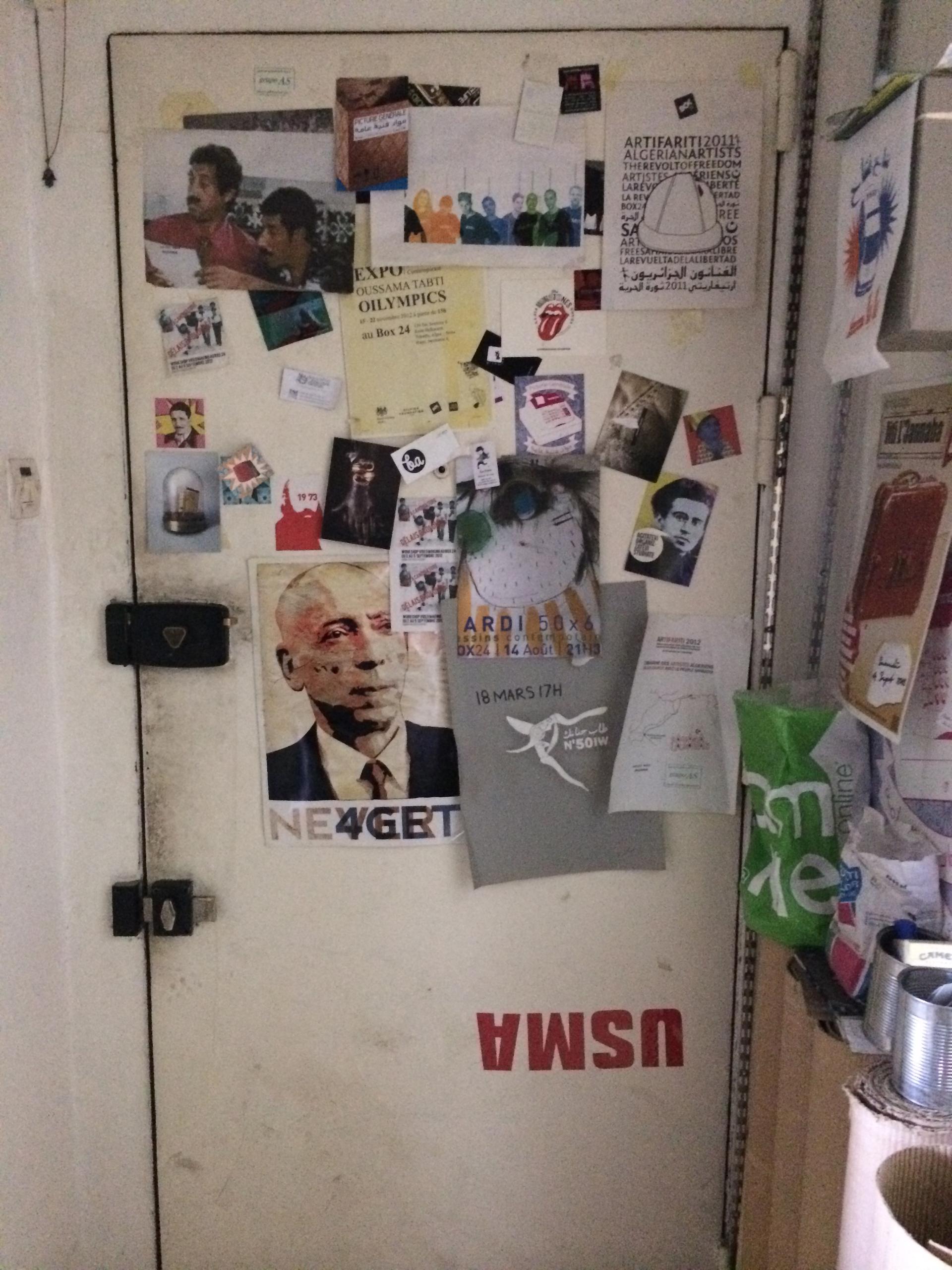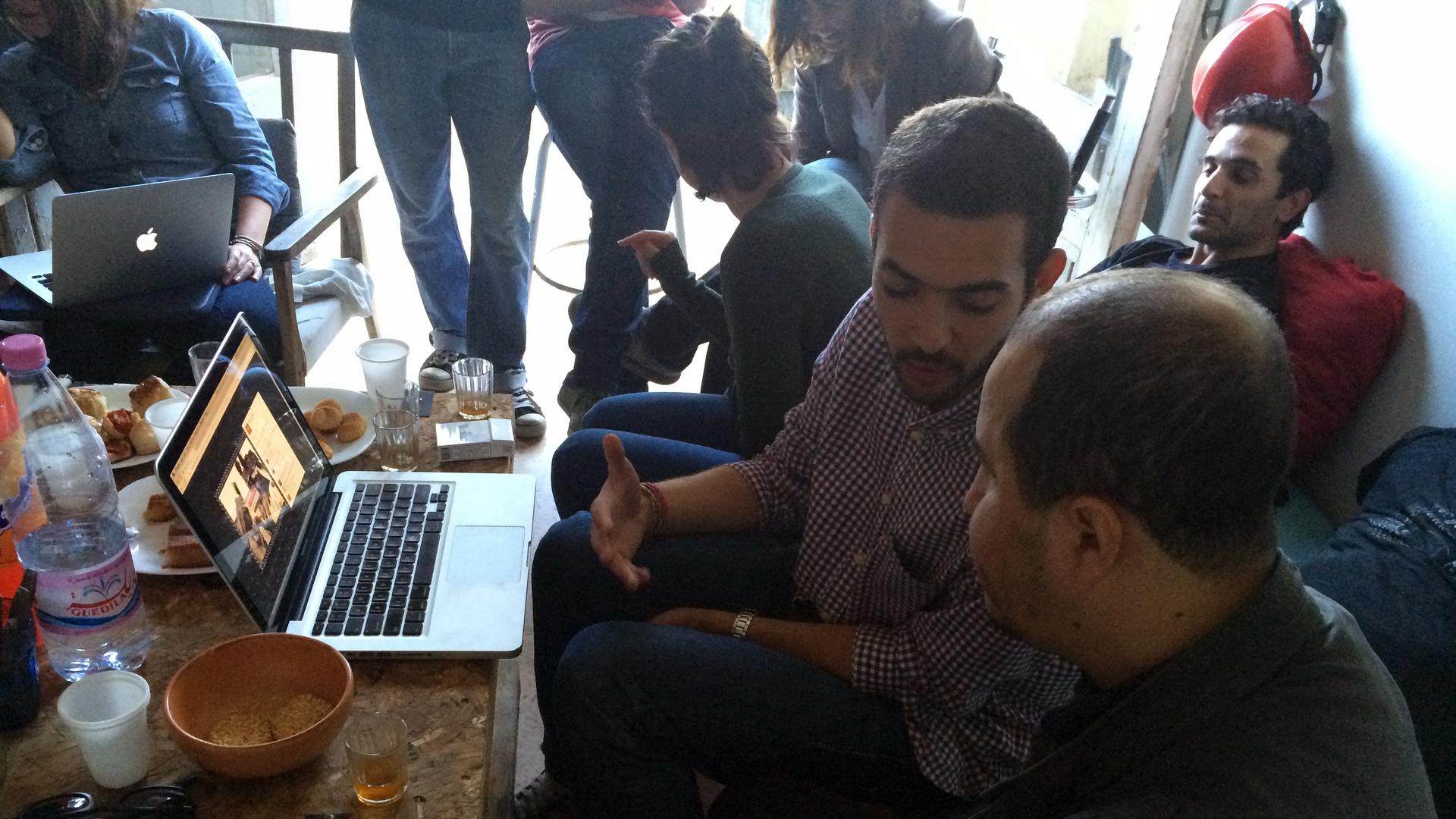Algeran artists exchange ideas at BOX 24, an artist collective in Algiers.
Here at an apartment in the trendy Algiers neighborhood of Telemly, a dozen young artists are gathered. Some of them are frustrated.
"We're sick of art in Algeria being stuck – or just portrayed in orientalist paintings, or images of camels and deserts," says Walid Aidoud, a graphic designer based in Algiers. "We want it to be known that many Algerian artists are creating contemporary art, this exists here."
Here in Telemly, Aidoud has helped launch an artist collective called BOX 24. It’s one a few independent art spaces in the country and a response to the Ministry of Culture’s monopoly on the art scene.
The ministry owns and operates nearly all of the exhibition space in the country. While the government regularly hosts expensive, flashy exhibitions of well-known Algerian artists, these guys say it has almost completely ignored young artists and contemporary art. Subjects like corruption, unemployment and the frustrations of Algeria’s youth are overlooked. Meanwhile, in 2012, the ministry’s budget was $450 million.
“There’s huge money in culture, but it’s not the artists who are getting it,” explains Zeineb Sedira, an award-winning artist who has been dubbed the grand dame of Algerian art.
Sedira has exhibited in Ministry of Culture-sponsored exhibitions, but says the new generation of artists aren’t being supported. Their work isn’t shown; they don’t get public funding; the once-renowned arts school in Algiers has grown dilapidated with neglect.
While artists like Zeineb Sedira, Walid Aidoud and others are working hard to create independent spaces for art, what is still missing is an independent art economy.
“Your three fundamentals are museums, artists and collectors,” says Taymour Grahne. He owns his own gallery in New York City, one of the only in the US exhibiting Algerian artists. “Not to mention galleries — Tunis has galleries. Morocco, Egypt have galleries. But Algeria lacks them … a gallery scene is crucial. But because Algeria has been closed for so long, I think it’s affected how artists produce work.”
Grahne couldn’t be more right. When Algerian artist Amenia Menia couldn’t find an exhibition space, she decided to take her art outdoors.
“For me, the best thing was to go in the streets, in the public space to meet the people. For me, it was fundamental,” she explains.
Menia is an internationally exhibited artist who lives and works in Algiers, though she has made a name for herself internationally. She set out to create large-scale urban installations on the site of the government’s never-ending subway construction project in Algiers, but ran into constant bureaucratic hurdles with authorities. In controlling spaces for art, the ministry is essentially deciding what is and is not art.
“For them, it wasn’t art,” says Menia. “For them, artwork is only canvas or sculptures … in a very classical manor. I can’t continue with an unseen artwork. It’s a very big frustration to be in London or Paris or Sharjah and not exhibiting here.”
Another thing affecting Algeria’s art scene is the long civil war of the ‘90s. During that decade, artists, writers and intellectuals were targeted by militants for execution. Today, it’s a subject the government considers taboo, but young artists are beginning to unpack the trauma and scars of the recent past.
Because they address topics that make the government uncomfortable or challenge the established artistic norms, Amina and many other artists confront the difficult challenge that their work may never be seen — at least in Algeria.
